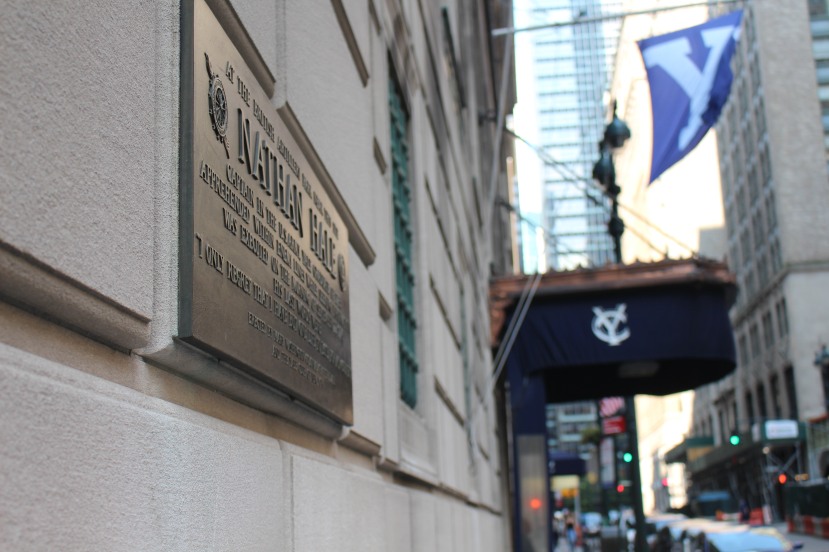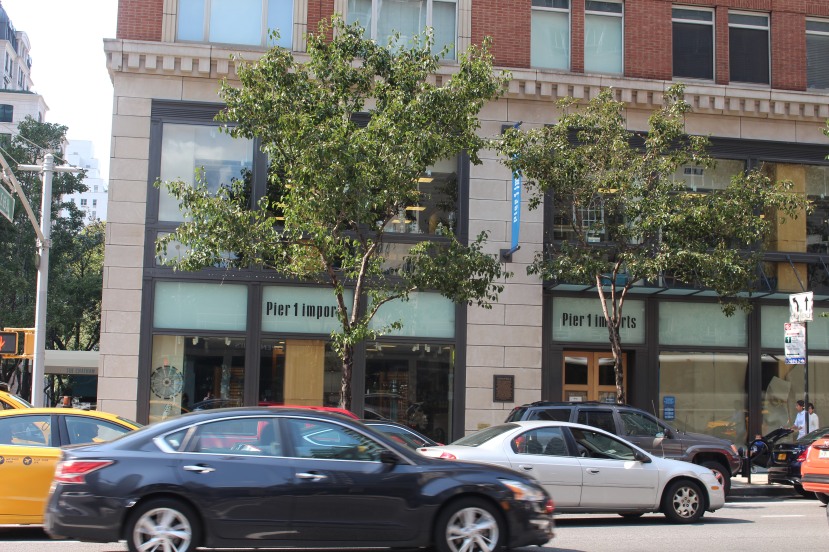It was a warm autumn morning when Nathan Hale awoke to face his execution. Just weeks before, the British had taken New York City, and General Washington was desperate for useful intelligence. A recent Yale graduate with a thirst for adventure, Hale volunteered to sneak behind enemy lines and spy on the British. In the garb of a schoolmaster, Hale went from camp to camp where, according to Captain William Hull, “he had procured sketches of the fortifications, and made memoranda of their number and different positions.” Unfortunately, his talent for espionage did not match his enthusiasm. The curious “schoolmaster” quickly drew attention from British intelligence. Hale confessed his activities to a man in a tavern after the man expressed sympathy for the colonies. The man turned out to be a British agent.

On September 21, soldiers dragged Hale before General William Howe. With neither trial nor jury, Howe sentenced Hale to death. The evidence was irrefutable. Soldiers found descriptions of troop formations written in Latin – an amateur’s attempt at code – hidden in the heel of Hale’s shoe.
Hale spent the night in a damp cell under the watch Provost Marshal Cunningham, who refused Hale’s requests for a confessor and a Bible. He was allowed to write a final letter to his mother and siblings, but the letter was later destroyed.
The next morning, soldiers led Hale to the gallows and threw a rope around his neck. As the executioner pulled the noose tight, he asked Hale if he had any regrets. His response? “I only regret that I have but one life to lose for my country.” The rope stretched, and Hale’s lifeless body dangled in the breeze.
It was September 22nd, 1776. He was 23 years old.
Hale’s dying words are a touchstone of American history. But how many know where he said them? Turns out historians aren’t sure, either, though that hasn’t stopped them from arguing about it for 240 years.
City Hall Park:

“Close to the provost jail was an old burying ground in Chambers, then Barrack, Street and this was the spot that Cunningham chose for his executions.” – Nathan Hale: The martyr-hero of the revolution, with a Hale genealogy and Hale’s diary, by Charlotte Molyneux Holloway (1902)
For many years, scholars thought Hale was executed in City Hall Park. In fact, City Hall Park had been used for executions even before the British occupation, sometimes hanging criminals five at a time. During the Revolutionary War, “traitors to the Crown” could always be found dangling from the tree branches behind the army barracks on Chambers Street (now the site of the Tweed Courthouse.) Today, you can find a statue honoring Nathan Hale outside of City Hall, a gift from the Sons of Liberty. No one knows what Hale looked like, so the likeness is really a shot in the dark. During the early 20th century, you could get a decent view of the statue, but a series of ill-placed security fences make it impossible to view the statue from the front today. History buffs must be content to admire Hale from the back.
East Broadway:

Credit: Marina Chetner
“On the fatal morning, he was led out to the place of his execution, which, upon the best data at hand, appears to have been the Rutgers’ orchard, not far above Franklin Square on East Broadway.” – Commemorative of Nathan Hale: Martyr-spy of the Revolution, by Henry Phelps Johnston (1887)
Others believe Hale met his fate in Chinatown. The above quote comes from a 19th-century historian who relied on the testimony of Captain Daniel Thurston Wandell and a 13-year-old slave who reportedly tied the rope around the apple tree. Before he started donating money to Queen’s College in New Brunswick (now called Rutgers University), Henry Rutgers was one of the wealthiest landowners in New York City. His holdings included most of the Lower East Side, so that “orchard” Johnston mentions covered a lot of ground. (Henry, Rutgers, and Orchard Streets are all named, appropriately enough, for Henry Rutgers’ orchard.) By 1776, Rutgers was a colonel in the Continental Army, and the British occupied his mansion at Pike and Monroe.
44th and Vanderbilt:

“At the british artillery park near this site, Nathan Hale, Captain in the U.S. Army, graduate of 1774, was apprehended within enemy lines while seeking information, was executed on the morning of September 22nd, 1776.” – Erected by Mary Washington Colonial Chapter, D.A.R. and the Yale Club of New York
Hale graduated from Yale in 1773, and he’s been a treasured son of the university ever since. A statue of Hale resides in an alcove on the second floor, a constant victim of theft by pranksters from the nearby Harvard and Cornell Clubs. The Yale Club erected their clubhouse here in 1915 ostensibly because it was the site of Hale’s execution. My guess is they’ve got it backwards: they built the clubhouse and decided it was as good a place as any for Hale to be executed.
46th and 1st:

“On the wall of the Wilson meat-packing plant, on the southeast corner of First Avenue and Forty-sixth Street, is a TABLET commemorating the execution of Nathan Hale (September 22, 1776), which is supposed to have occurred near here.” – The WPA Guide to New York City (1939)
There may have been a plaque at 46th and 1st, but the Wilson Meatpacking Plant had things a little confused. After the British captured Manhattan, General William Howe set up camp in the house of John Beekman at 51st and 1st. The Royal Artillery Park, however, lay just a few blocks south at 46th and 1st, although the park, the plaque, and the meatpacking plant have all been destroyed, replaced by the United Nations Headquarters. That’s not to say Hale wasn’t executed at a royal artillery park – just not this one.
66th and 3rd:

“Legendary 21-year-old hero of the Revolutionary War was hanged as an American spy on Sunday, September 22, 1776, probably within 100 yards of here…Other places have been cited, but a British officer’s diary indicates the royal artillery park near the Dove Tavern on the Old Post Road, now Third Avenue where it intersects 66th Street.” – The New-York Historical Society
Finally, we’ve arrived at the most likely candidate. But what makes this spot more valid than any other spot? First off, I’m inclined to trust the New-York Historical Society more than most other sources. Second, their location is backed up by a contemporary source. Most documents cite hearsay years after Hale’s execution like a game of telephone. The NYHS found a 1776 ledger where a Captain John Montresor (really interesting dude, by the way) wrote “Nathan Hale, this day executed at 11 o’ clock in front of the artillery park.” Thirdly, and most importantly, the NYHS is using a British source. While many Americans might take pride in claiming their land as the execution site of Nathan Hale, a British soldier could care less where a Colonial was executed. To John Montresor, September 22nd, 1776 was just another day at the office.

Categories: Regular Article
